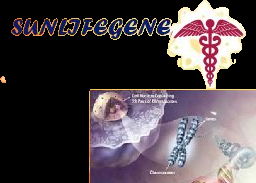journal of sun life gene medical science research ( volume 2, no.1 ,2022)
Protocol for COVID-19 detection (Need PPE Level 2 Lab to do this detection) Rachel Chen Grade 12 , Toronto Ontario, Canada RNA preparation Mar 28,2020 1. Collect a sample from a patient; sputum, aspirate or lavage from lower respiratory tract, and nasopharyngeal and oropharyngeal swabs, nasopharyngeal wash/nasopharyngeal aspirate from the upper respiratory tract. 2. Lyse the cells with 1 ml Trizol reagent. Pass the lysate through a pipette several times. 3. Incubate the homogenized samples for 5 minutes at 15 to 30°C. 4. Add 0.2 ml of chloroform per ml of Trizol and cap sample tubes securely. 5. Shake tubes vigorously by hand for 15 seconds and incubate them at 15 to 30°C for 2 to 3 minutes. 6. Centrifuge the samples at no more than 12,000g for 15 minutes at 2 to 8°C.
Read MoreCOVID 19 and SARS CoV2: Origin, Symptoms, and ECMO The coronavirse disease 2019 (COVID-19) is a new type of disease caused by severe acute respiratory syndrome coronavirus 2 (SARS-COV2) that has been discovered in Wuhan, China in mid-December 2019. What is a coronavirus? Coronaviruses are a group of RNA+ viruses the common cold to more severe effects such as pneumonia. There are 7 types of coronaviruses that can infect humans, and they are single stranded RNA viruses. These include HCoV-229E, HCoV-OC43, HCoV-NL63, HKU1, SARS, and MERS. COVID-19 can cause pneumonia, cough, fever, and having difficulty breathing. It is very similar to Severe Acute Respiratory Syndrome (SARS) and Middle East Respiratory Syndrome (MERS). This new virus measures from 60-220 nanometres. This new signal +RNA virus has 27000-32000 base pairs.
Read More
